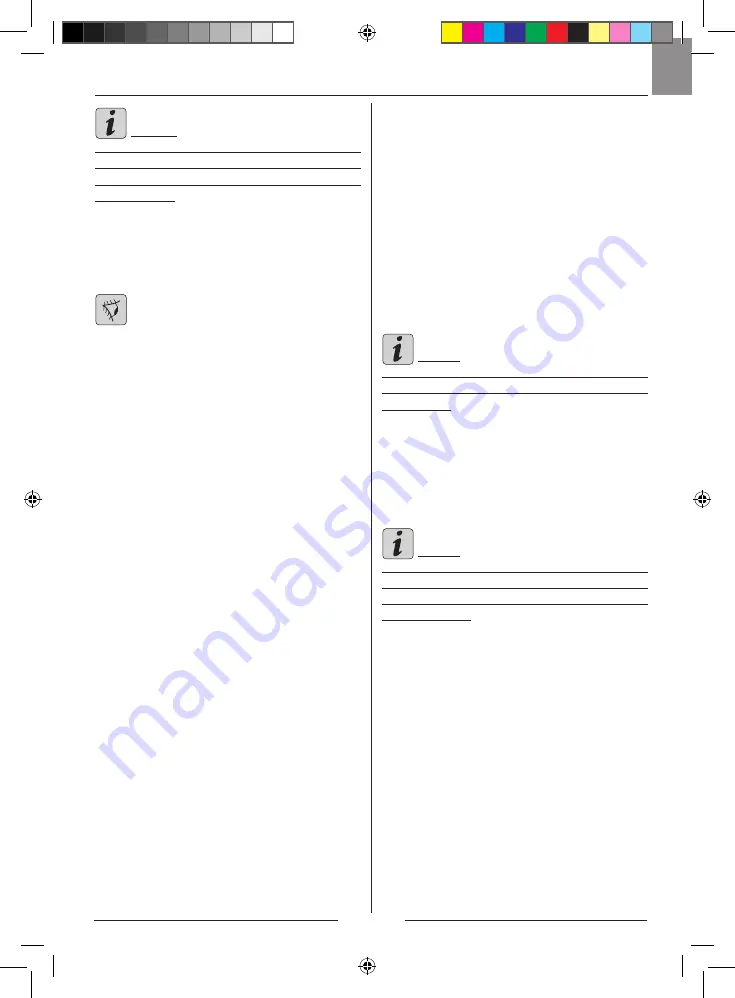
ENGLISH
- 13
NOTE:
If during the washing, you notice that the
rubber blades (53) are damaged or worn, it
is necessary to replace them or to turn them
upside down.
- Replace all the components in reverse
order.
11.1.e - Cleaning the brush (Fig. 24)
WARNING:
Do not put the brush into a bucket or con-
tainer with water or water and detergent.
The brush can be removed both with the
squeegee system (48 Fig. 1) mounted or di-
smounted.
- Press the button (55) from the central
part of the brush (9).
- Slightly lift the machine and pull out the
brush (9) as shown in the figure.
- Wash well the brush and check that there
are no wires or other fibres on the brush.
- Perform the steps in this section in rever-
se in order to replace it ensuring the cor-
rect insertion of the brush (9) in the axle
(24), then turn it to secure it in the holder
(25) until a click is heard.
OPERATIONS TO
PERFORM WHEN
NECESSARY
11.1.f - Replacing the brush
If it is necessary to replace the brush when
it is worn and has a ø under 6.5 cm or to re-
place it according to the type of floor to wash:
- Remove the brush as indicated in the pa-
ragraph “Cleaning the brush” and replace
it with a new one.
11.1.g - Replacing the squeegee rub-
ber blades(Fig. 25)
When it becomes clear that drying the floor
is difficult or traces of water remain on the
floor, it is necessary to check the wear on the
squeegee rubber blades (48 Fig. 1):
- Remove the squeegee unit (48 Fig. 1) as
indicated in the “Cleaning the squeegee”
paragraph.
- Remove the internal rubber blade (53).
- Remove the latch (54) by rotating the
hand wheel (55).
- Remove the external rubber blade (56).
NOTE:
When the rubber blades (53) and (56) are
worn on one side, they can be turned upside
down once.
- Replace or turn upside down the rubber
blades (53) and (56) without interchan-
ging them.
- Replace all the components in reverse
order.
NOTE:
Do not interchange the rubber blades, a smo-
oth rubber blade will be mounted inside the
wiper and a corrugated one will be mounted
on the outside.
















































